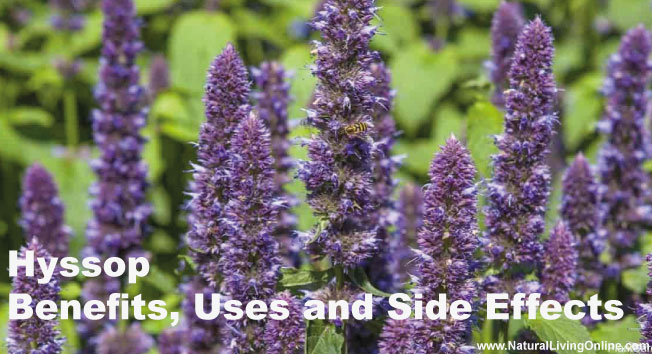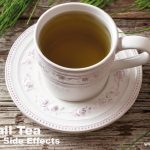Balsam fir essential oil, derived from the needles of the Abies balsamea tree, carries the crisp scent of pine forests and is treasured for its array of benefits. This essential oil is not only sought after for its fresh and uplifting aroma, but also for its soothing properties for the skin and respiratory system. With a history rooted in traditional practices, it has found a place in modern aromatherapy and holistic wellness.
The oil is obtained through a process of steam distillation, ensuring that the therapeutic properties of the plant are preserved. Its principal chemical components include alpha-pinene and beta-pinene, which contribute to its characteristic fragrance and therapeutic effects. Widely used in aromatherapy, balsam fir essential oil is also believed to carry emotional benefits, helping to alleviate feelings of stress and providing a grounding experience. However, it is important to note that you should use it with caution, as with any essential oil, to avoid potential side effects, particularly when applying it topically or inhaling it.
Key Takeaways
- Balsam fir essential oil is valued for its skin-soothing and respiratory support properties.
- It encompasses a woodsy aroma and is used in aromatherapy for stress relief.
- To avoid side effects, use it with appropriate safety precautions and in recommended dilutions.

Origins and Characteristics
Balsam fir, scientifically known as Abies balsamea, is a coniferous evergreen tree native to North America. This tree is renowned for its aromatic properties and utilization in essential oil production.
Botanical Profile
Species: Abies balsamea
Common Name: Balsam fir
Habitat: Thrives in cool, northern climates of North America
Height: Typically grows to a height of 46-66 feet (14-20 meters)
Needles: Flat, needle-like leaves approximately 0.79-1.18 inches (2-3 cm) long
Cones: Upright, purple cones that turn brown as they mature
Lifespan: Can live up to 200 years
Cultivation: Prefers moist, acidic soil and is often found in swamps, hillsides, and mixed forests
The balsam fir’s needle-like leaves are a distinct characteristic, bursting with a fresh, crisp scent upon crushing. The species has a rich history of traditional uses, including medicinal purposes by indigenous populations, and is cherished for its soothing and aromatic essential oil.
Extraction and Composition
Balsam fir essential oil is meticulously extracted predominantly through steam distillation, specifically targeting the organic compounds within the tree’s needles and twigs. This process ensures the capture of the oil’s therapeutic properties often found in its unique constituents.
Distillation Process
Manufacturers extract balsam fir essential oil primarily through steam distillation. In this process, the steam passes through the needles and twigs of the balsam fir, which prompts the release of the oil. Then, the steam carrying the oil is cooled, leading to the separation of water and oil. This allows manufacturers to collect the pure essential oil.
Key Constituents
The composition of balsam fir essential oil is rich in monoterpenes, providing it with its characteristic aroma and beneficial properties. Notably, it contains a high concentration of a-pinene and beta-pinene, which are reputed for their soothing effects. Another significant component is bornyl acetate, which contributes to the oil’s forest-like, fresh scent and is believed to impart a calming sensation.
Therapeutic Benefits
Balsam fir essential oil is celebrated for its wide range of therapeutic benefits, prominently featuring its utility in respiratory health, skin care, and mental wellness. Each of these dimensions draws on the oil’s intrinsic properties, offering a natural choice for those seeking holistic wellbeing.
Respiratory Health
Balsam fir essential oil is known for its positive impact on the respiratory system. It boasts expectorant capabilities that can aid in alleviating congestion associated with conditions like bronchitis and asthma. Frequent usage through inhalation or diffusion is known to contribute to clearer breathing passages and relief from respiratory discomfort.
Skin Care Advantages
The anti-inflammatory and antibacterial properties of balsam fir essential oil make it a valuable ally against skin irritation. It can be particularly soothing for conditions such as eczema, psoriasis, and dermatitis, reducing inflammation and curbing itchiness when mixed with a carrier oil and applied to affected areas.
Mental Wellness
This essential oil promotes mental wellness by encouraging relaxation and providing a grounding experience. Its comforting scent helps alleviate stress and may be beneficial in managing headaches. Integrating balsam fir essential oil in aromatherapy practices can support a serene mindset and enhance overall emotional balance.
Practical Uses and Blends
Balsam fir essential oil boasts an invigorating fresh aroma, making it a favorite in aromatherapy and topical applications. Through blending with complimentary oils, its range of uses extends from soothing massages to vibrant room scents.
Aromatherapy Practices
Balsam fir oil is celebrated for its crisp, woodsy scent. In aromatherapy, it is used to promote a sense of relaxation and uplift the mood. To harness these benefits, a few drops are often added to bath water or used during a massage with a carrier oil such as jojoba or coconut oil.
- Bath: 3-5 drops mixed in bath water.
- Massage: 2-3 drops per tablespoon of carrier oil.
Diffuser Blends with Balsam Fir Oil
When used in a diffuser, balsam fir oil emits a purifying scent that can clear the air of unwanted odors and provide a refreshing atmosphere. For a synergistic blend, consider mixing balsam fir essential oil with other essential oils such as eucalyptus or peppermint.
- Invigorating Blend:
- 3 drops of balsam fir oil
- 2 drops of peppermint essential oil
- 1 drop of rosemary essential oil
Topical Applications
For topical use, balsam fir oil’s anti-inflammatory qualities can be beneficial for soothing minor skin irritations when diluted with a carrier oil. Its analgesic properties are appreciated in blends intended for relieving muscle and joint discomfort.
- Soothing Skin Recipe: 1-2 drops balsam fir oil in 1 tablespoon of carrier oil.
- Muscle Relief Blend:
- 4 drops balsam fir oil
- 4 drops lavender essential oil
- 2 tablespoons of carrier oil (e.g., sweet almond oil)
Always perform a patch test to ensure no allergic reactions before using it broadly on the skin.
Safety and Precautions
When using Balsam Fir Essential Oil, individuals should consider safety measures to ensure it is used in a way that minimizes risk and adverse reactions.
Skin Sensitivity:
- Before topical application, you must dilute the essential oil with a carrier oil to prevent skin irritation.
- Conducting a patch test on a small area of skin can help ascertain susceptibility to allergic reactions.
Possible Side Effects:
- In some cases, people may experience skin reactions, such as rashes or itching.
- Inhaling the oil in high concentrations could lead to respiratory irritation.
General Precautions:
- Make sure to use Balsam Fir Essential Oil in moderation. Overuse can increase the potential for harmful effects.
- Individuals with pre-existing health conditions or those taking medication should consult with a healthcare professional prior to use.
Pregnancy:
- Pregnant women should exercise caution with Balsam Fir Essential Oil. Consultation with a healthcare provider is recommended before use.
- Due to the lack of research on the effects of this oil during pregnancy, avoiding it may be prudent.
When integrating Balsam Fir Essential Oil into daily routines, users should follow these guidelines to ensure a positive and safe experience.
Frequently Asked Questions
What are the potential skin benefits of using Balsam Fir essential oil?
Balsam Fir essential oil may soothe skin irritations, such as eczema, psoriasis, and dermatitis, by reducing inflammation and itchiness. It should be diluted with a carrier oil before application to the skin.
What are the potential skin benefits of using Balsam Fir essential oil?
Balsam Fir essential oil may soothe skin irritations, such as eczema, psoriasis, and dermatitis, by reducing inflammation and itchiness. It should be diluted with a carrier oil before application to the skin.
How can Balsam Fir essential oil enhance spiritual well-being?
The oil’s grounding aroma is linked to promoting feelings of relaxation and emotional balance. It is often used in practices like meditation to foster a sense of mental clarity and peace.
What are the common side effects associated with Balsam Fir essential oil?
When used topically, Balsam Fir essential oil may cause skin irritation or allergic reactions in some individuals. It is important to patch test the oil before widespread use and consult a healthcare professional if concerns arise.
In what ways can Balsam Fir essential oil be used for hair care?
In hair care, this essential oil can be added to shampoo or conditioner to help nourish the scalp and potentially promote healthy hair growth due to its antiseptic properties.
With what other essential oils does Balsam Fir oil blend well?
Balsam Fir oil blends well with a variety of essential oils including Eucalyptus, Peppermint, Tea Tree, and Rosemary, which can enhance sensory experiences and provide complementary benefits in aromatherapy.
This oil is traditionally used for its respiratory support properties. It potentially provides relief for asthma, coughs, and bronchial issues when used in aromatherapy practices such as facial steaming or diffusing.
This website does not provide medical advice.
All information provided on this website, and on associated social media networks, including but not limited to texts, images, and numbers are for general information purpose only. It is not intended as medical advice and it does not include all possible precautions, side effects, or interactions that may occur. Neither NaturalLivingOnline.com nor its author/founder take responsibility for how you use this information. Statements contained on NaturalLivingOnline.com have not been evaluated by the FDA. You should conduct thorough research via multiple sources and consult your physician or qualified doctor before using any essential oil or herbal remedy. Information on NaturalLivingOnline.com must not be relied upon for medical, legal, financial or other decisions.













